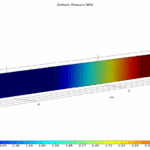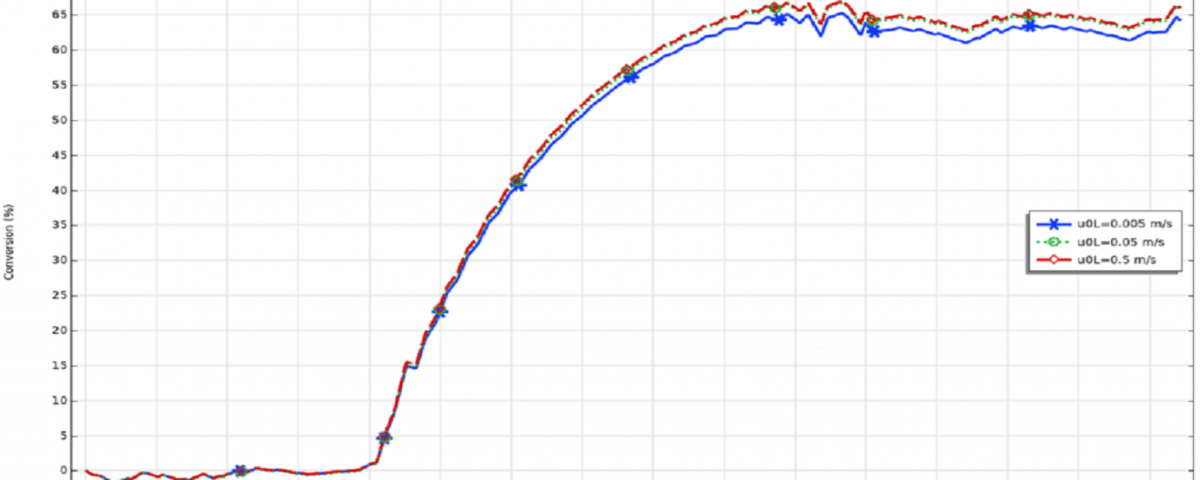Introduction
The modeling of carbon dioxide separation from air using carbon nanotubes in COMSOL software provides a powerful framework for investigating advanced carbon capture technologies. Given the increasing environmental concerns regarding climate change, the need for effective CO2 separation methods has become essential. Carbon nanotubes, with their exceptional adsorption characteristics and high surface area, present an innovative solution to this challenge.
Utilizing the multifaceted capabilities of COMSOL, researchers can simulate and analyze the complex interactions between CO2 molecules and the surfaces of nanotubes under varying conditions such as temperature, pressure, and flow dynamics. This modeling approach not only aids in a better understanding of the separation mechanisms but also assists in optimizing the design and operational parameters of carbon capture systems, marking a significant step toward sustainable solutions for reducing greenhouse gas emissions.
Process Description
In this project, a two-dimensional model is developed for the separation of carbon dioxide from a gas stream using carbon nanotubes in a Venturi scrubber. Axial penetration within the scrubber is considered. It is important to note that the primary source for this modeling is based on a specific article.
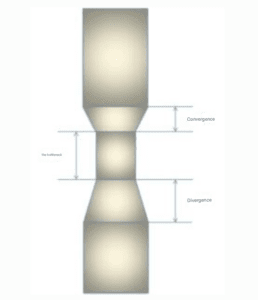
The Venturi scrubbers consist of three essential sections: the convergence section, the throat section, and the divergence section. The incoming gas first enters the convergence section. According to Bernoulli’s equation, as the cross-sectional area decreases, the velocity of the gas increases. Liquid is injected into the gas at the throat or the beginning of the convergence section. The gas passing through the throat, due to its high speed, breaks up the liquid into a large number of small droplets. The highest rate of removal of gaseous pollutants and fine particles occurs within the throat, where fine liquid droplets mix with the gas. Finally, the gas flow enters the divergence zone, where the cross-sectional area increases and the flow velocity decreases.
Assumptions Necessary for Simulation in the Software
1. The gas flow enters the system as unsteady.
2. The model implemented for the main modeling (carbon nanotubes) follows Euler-Euler equations.
3. The operational conditions of the process are isothermal.
4. Fick’s law is used for the absorption of carbon dioxide.
5. The behavior of the gas mixture entering the system is ideal.
6. The gas mixture entering the system consists of air and carbon dioxide.
7. In the main modeling, the operational state in both systems is non-humid.
In this project, the modeling of carbon dioxide separation from air using COMSOL software has been carried out. The following figure shows part of the results:
1. Concentration profile
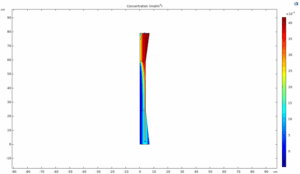
2. Carbon dioxide concentration profile
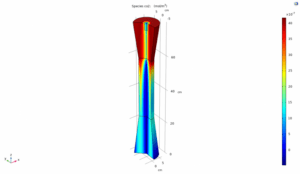
3. Volume flow velocity profile
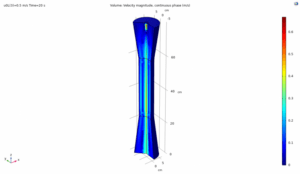
4. Mixture velocity profile
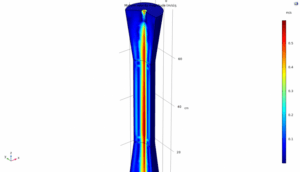
Conclusion
Modeling the separation of carbon dioxide from air using carbon nanotubes in COMSOL software serves as an effective tool for optimizing carbon capture processes and reducing environmental impacts from CO2 emissions. By providing accurate simulations and multi-phase analyses, this modeling allows for a deeper understanding of the separation behavior and interactions between CO2 molecules and nanotubes.
The results obtained from these analyses can help engineers and researchers optimize the design and performance characteristics of carbon capture systems, offering more effective solutions to combat climate change and environmental challenges. Overall, this approach can significantly contribute to the development of innovative and sustainable technologies in the field of carbon dioxide capture and environmental protection. This project also includes an educational video along with the report.
